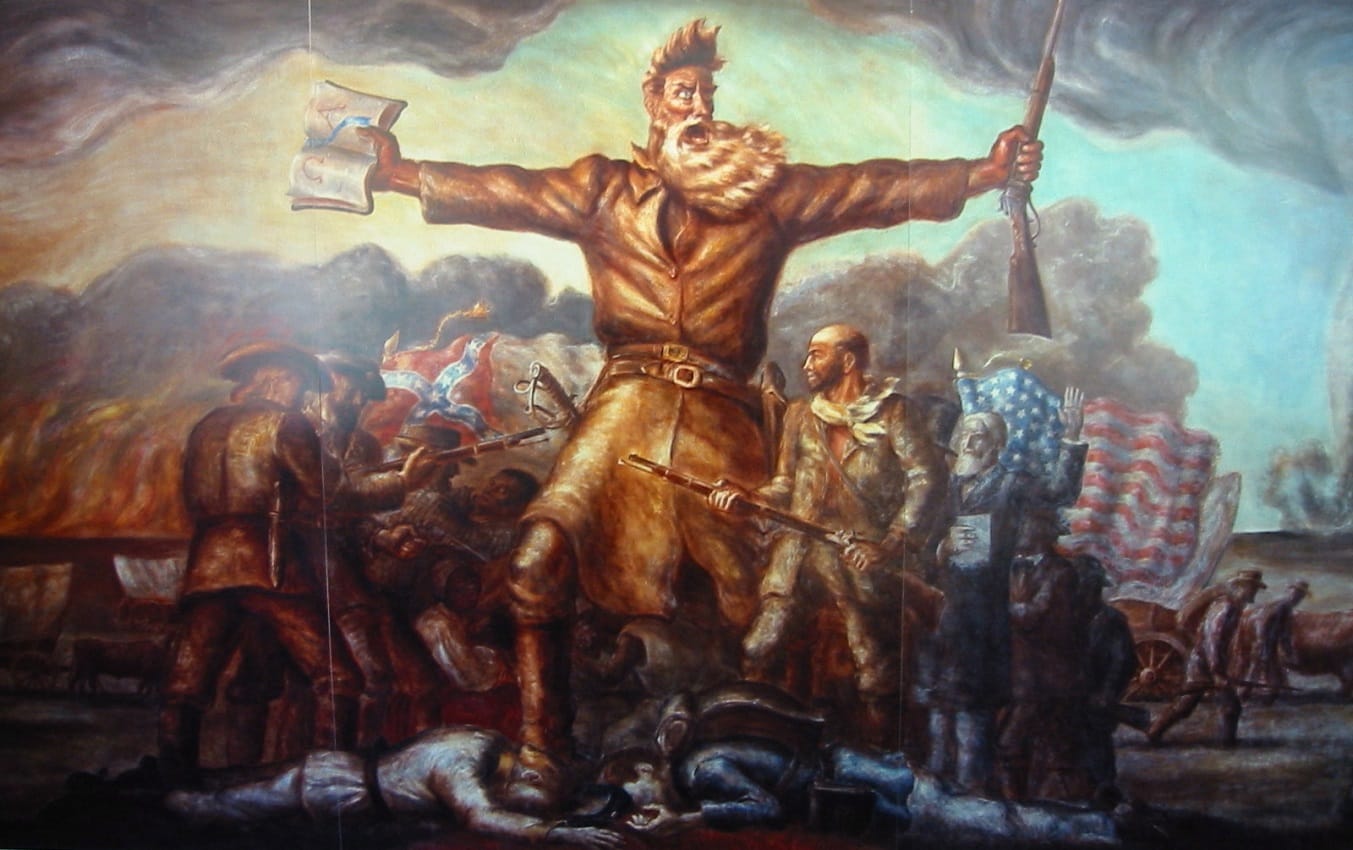
Overview: The image above is the full image that Loewen references in chapter 6 of Lies when discussing how John Brown and his raid at Harper's Ferry are often interpreted as the fanatical and doomed plot of a madman. In making his case, Loewen might have been better off to use the full image as opposed to the one cropped in on Brown's face. Here, one can see the scope of just how insane this representation of Brown is meant to make him look. He is a giant, stepping on the heads of the dead and towering over all others in the background. The image reflects nothing of Brown's calm and reflective nature prior to his execution for treason. Loewen's main argument in chapter 6 of Lies is that the erasure of big ideas from American texts (particularly racism, Loewen's pet preoccupation) does a disservice to students and to history by steering clear of any real controversy in an effort to remain as palatable as possible to everyone.
Screencast: Screencast 12
Big Question: How can we present big ideas to students when textbooks actively undermine this process?
Interactive Website: The interactive site for this blog is an interactive map of slavery over time in the United States that can demonstrate to students the expansion of the institution as well as its status immediately prior to the civil war. This is of particular importance to Loewen's case because the density of slave population likely correlated positively with seccesionist sentiment. The map can be found here, and would be a great way to show students how and where slavery spread over time using census data.
No comments:
Post a Comment